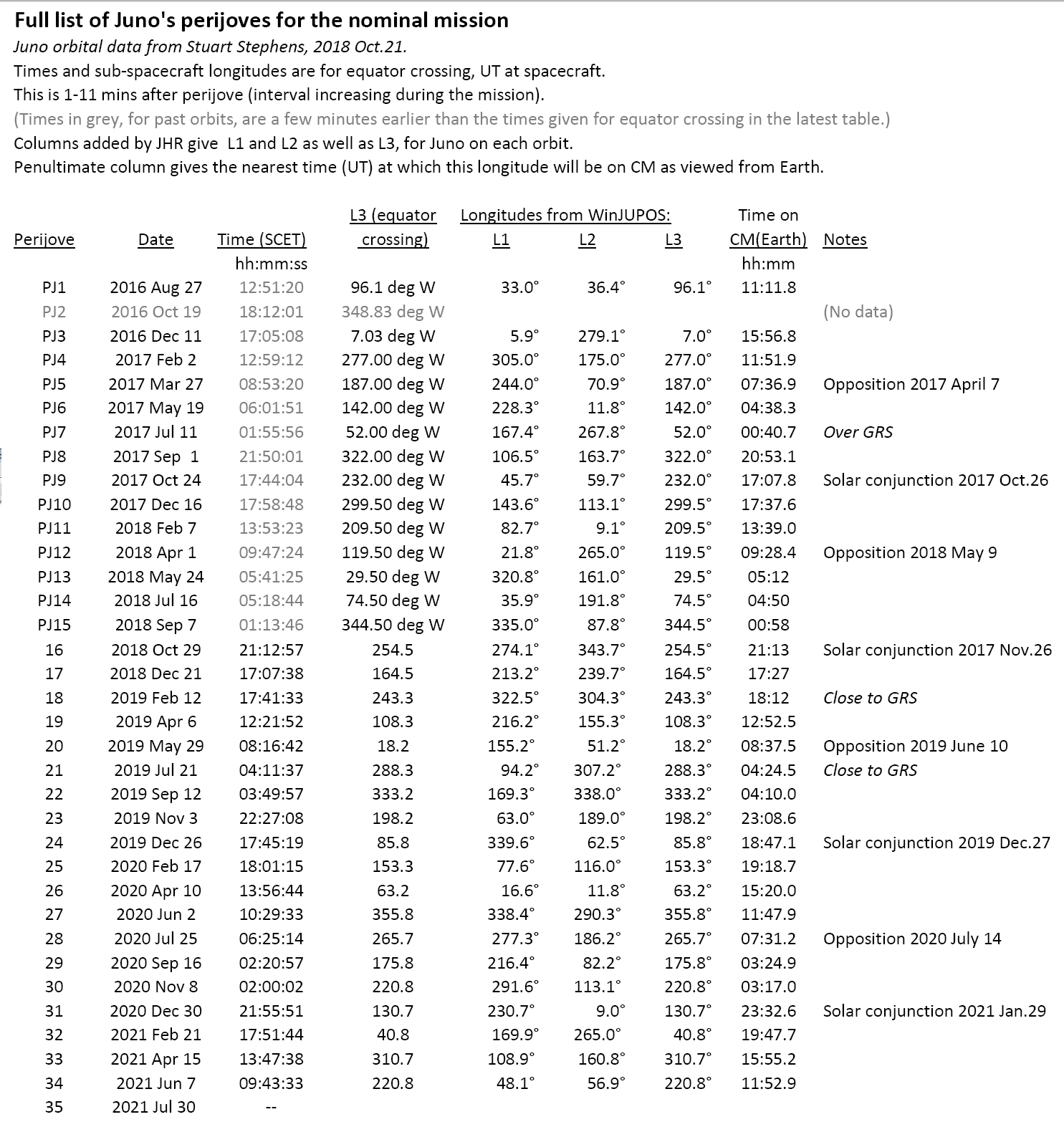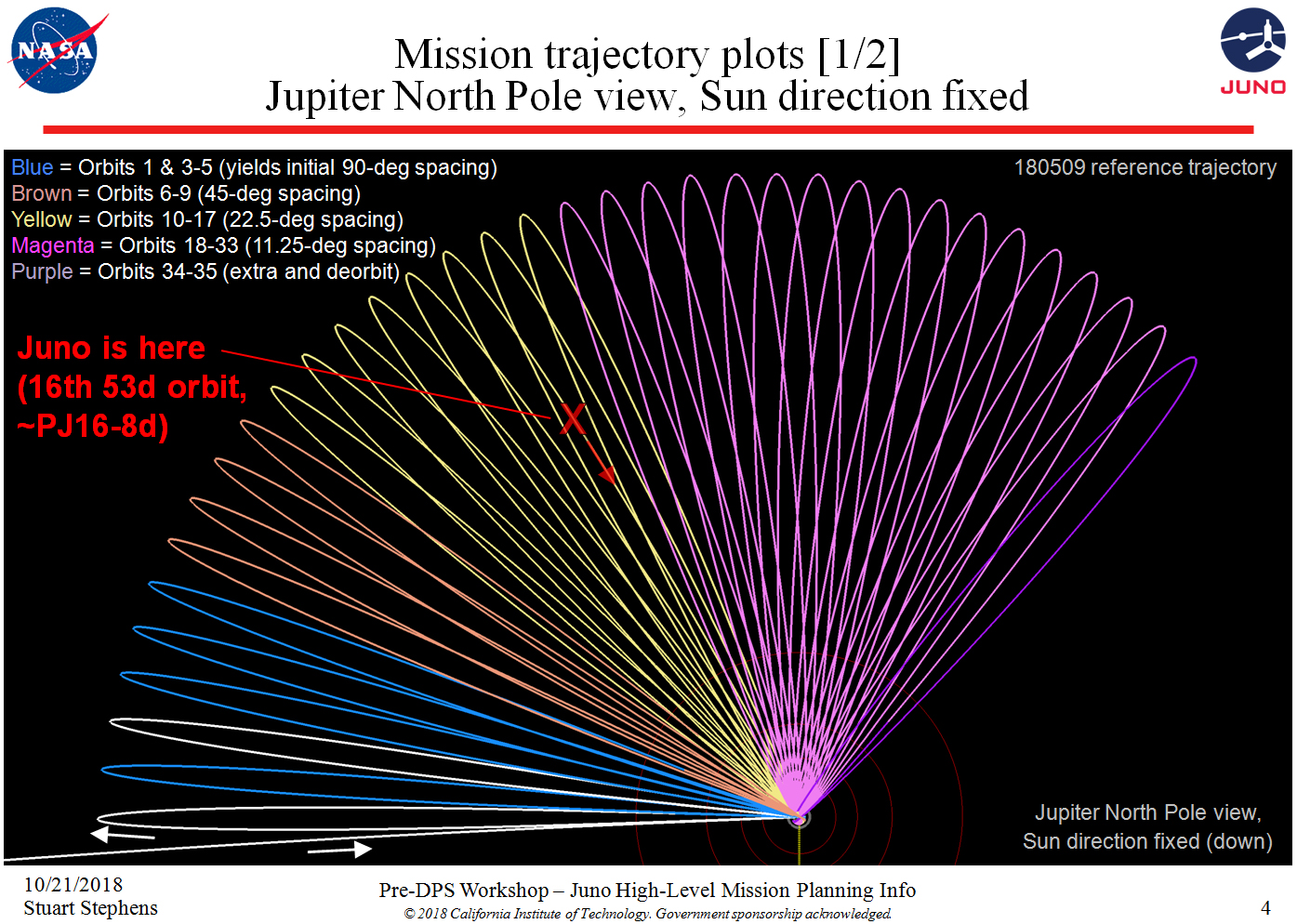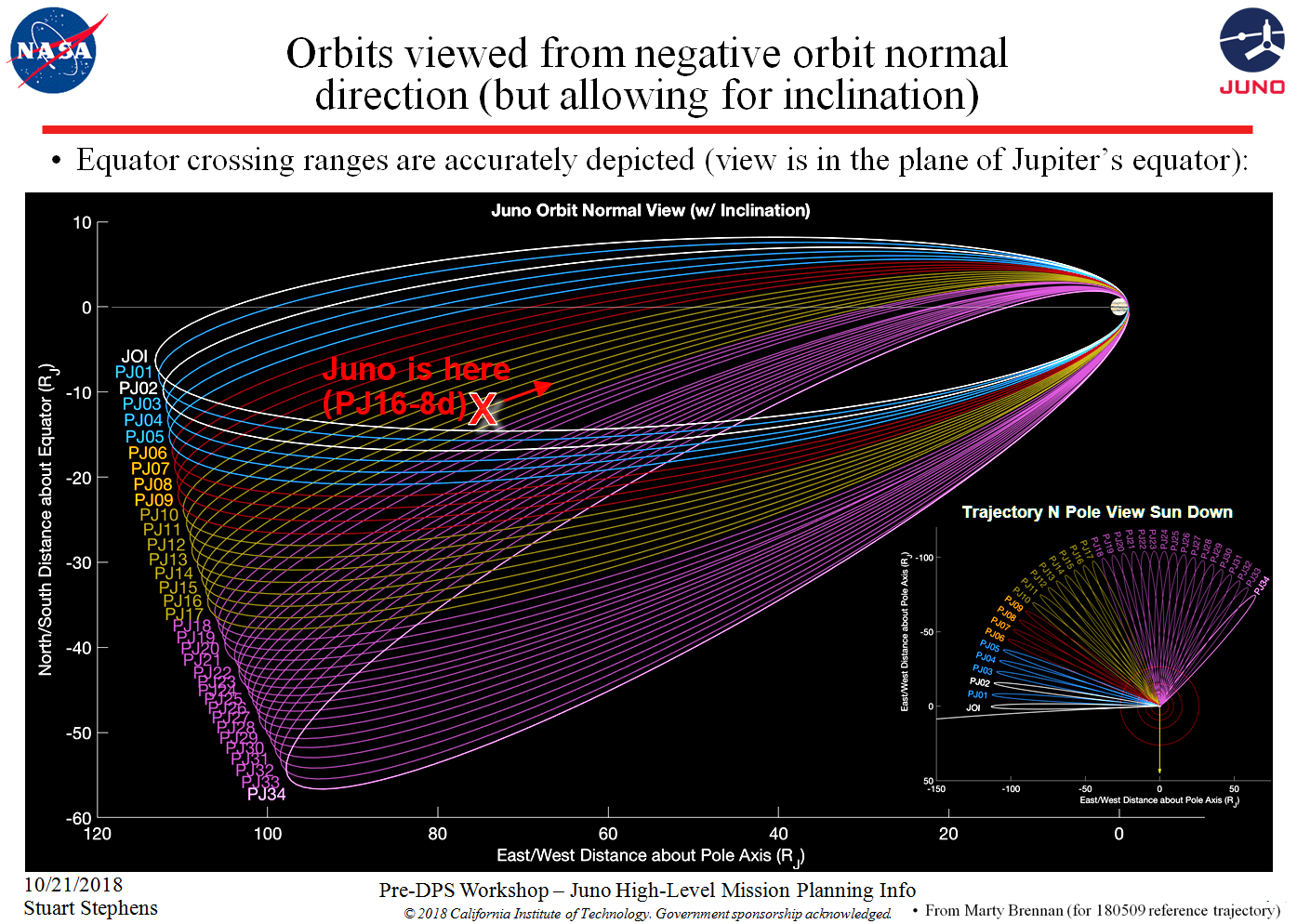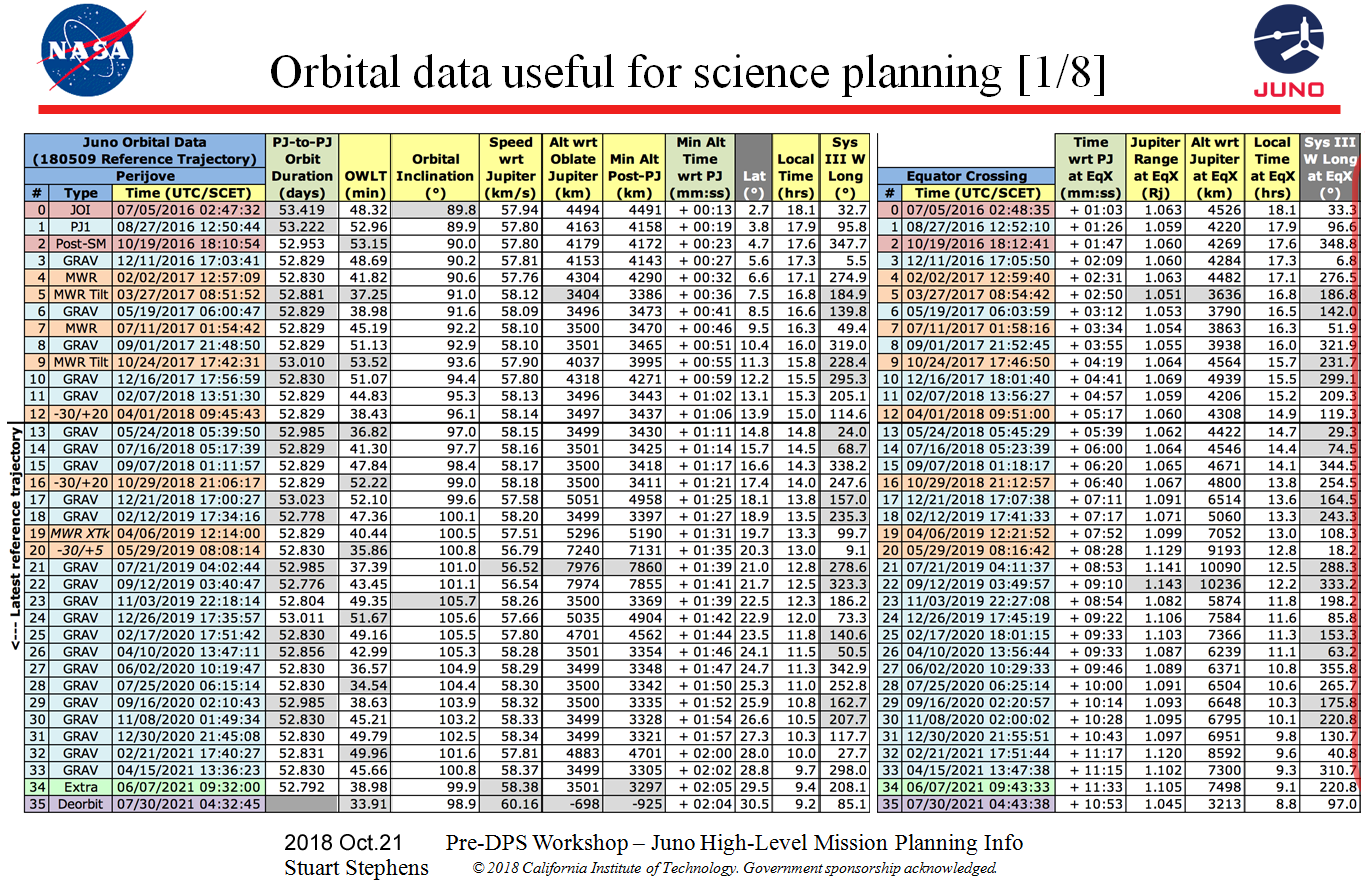FULL LIST OF JUNO’S ORBITS, 2016-2021
The following tables and diagrams show Juno’s planned orbits for its complete mission with 53-day orbits, as of 2018 October.
The first table gives the dates, times, and other data for each perijove. ‘Perijove’ (PJ) means the time at which Juno is closest to Jupiter, either generally (the 2-hour interval between passing over the north and south poles) or precisely (the time of closest approach to the centre of Jupiter; note that this is now 1-2 minutes before the time of minimum altitude over the oblate planet, and several minutes before equator crossing). SCET = spacecraft elapsed time (UT at spacecraft). OWLT = one-way light time.
The second table gives the longitudes at which the spacecraft crosses the equator on each orbit, in L1, L2 and L3.
The following three diagrams show Juno’s 34 orbits, viewed from 3 orthogonal directions. The point of perijove is drifting from the evening towards noon, and will then drift towards the morning side, because Juno’s orbit remains in similar orientation while Jupiter orbits around the Sun. Also, due to orbital perturbations, the point of perijove is gradually shifting north, and the inclination of the orbit is gradually increasing from 90 deg to ~105 deg (i.e. 75 deg retrograde), so it no longer passes directly over the poles.
Thanks to Stuart Stephens of NASA-JPL for the information and diagrams.
__________________________________________________________________________________________________________________________________________________

________________________________________________________________________________________________________________________________
 _____________________________________________________________________________________________________________________________________________________________________________
_____________________________________________________________________________________________________________________________________________________________________________

______________________________________________________________________________________________________________________________________________________________________________
| The British Astronomical Association supports amateur astronomers around the UK and the rest of the world. Find out more about the BAA or join us. |

